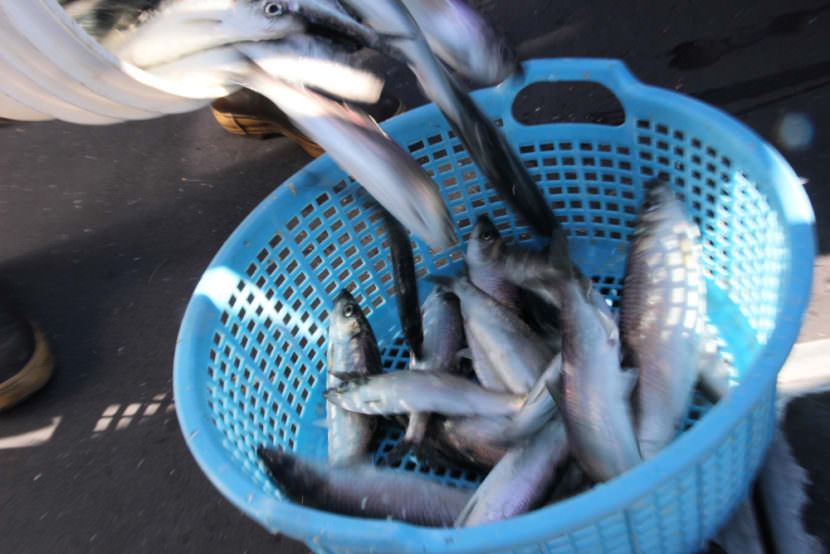
The Sitka Tribe of Alaska wants to see more protection for subsistence harvesters when herring season begins next month.
The Tribe’s Herring Committee is recommending a pair of proposals to reserve more areas for subsistence and to cut the commercial harvest by half.
Just a few weeks from now Sitka Sound will flood with commercial seiners and subsistence users all in search of one small fish – herring.
Commercial seiners harvest herring whole and strip the valuable sac roe from the females.
At the same time, subsistence users submerge hemlock branches in the water, which become coated with eggs as the fish spawn.
But Sitka Tribe of Alaska’s Director of Resource Protection Jeff Feldpausch said success rates for subsistence users are down.
“We’re seeing a change in the herring– how they spawn, where they spawn– and it’s making it much more difficult for subsistence harvesters to meet the ANS, or the amount necessary for subsistence,” Feldpausch said.
Feldpausch was speaking at the tribe’s most recent Herring Committee meeting.
He said subsistence needs have only been met half the time in recent years, with 2016 considered one of the poorest subsistence harvests in memory.
From what he’s heard, Feldpausch said it wasn’t always this hard to fill your freezer.
“Back in the ’80s, or earlier in the fishery, there wasn’t really an issue getting your eggs,” Feldpausch said. “As this biomass as grown you would think it would be even easier, but it’s becoming more and more difficult.”
The biomass, or how much herring are in the water, has fluctuated a lot since the 1980s.
Estimates from the Alaska Department of Fish and Game show spawning biomass ranging between 18,000 tons and 103,000 tons in the last couple of decades.
Fish and Game forecasts a total biomass of 73,000 tons for 2017.
Tribal citizen Tom Gamble said Fish and Game’s forecast model is outdated, that they’re just guessing.
“The 2017 biomass that has been forecast has no scientific proof,” Gamble said.
Gamble told members of the Herring Committee that he’s worried that if the spawn biomass is overestimated, subsistence users will lose out.
But Eric Coonradt, a Fish and Game area management biologist for Sitka, is confident in the forecast model.
“There are going to be skeptics out there, but the data is solid. The methods are solid,” Coonradt said.
The fishery is managed based on a detailed model that accounts for the distribution, size, and age of the herring — and on the success of the annual spawn.
Calculations on the size of the 2017 biomass began last year.
Daily aerial surveys get the length of the spawn and dive surveys get the depth of the spawn.
“We have a total area of spawn,” Coonradt said. “From that, we can calculate how many females would have been able to lay those eggs and you double that to account for males.”
But subsistence users don’t find this data reassuring when they’re pulling up empty hemlock branches.
So, the Tribe’s Herring Committee is drafting two proposals to the Board of Fish.
The first would close off certain areas to commercial fishing, including Katlian Bay, Aleutkina Bay and Nakwasina Sound.
Jeff Feldpausch said the board accepted a similar proposal in the past.
“In 2012 the Board of Fish did grant us a commercial closure zone, or the subsistence zone as we call it,” Feldpausch said. “We got about half of what we asked for. This is basically going in and asking for the whole thing we asked for originally.”
The second proposal asks the Board of Fish to reduce the guideline harvest level – or how much commercial seiners are allowed to catch – to 10 percent of the total spawning biomass, compared to the typical 20 percent.
The Tribe’s Herring Committee plans to review these draft proposals at its next meeting March 6.
